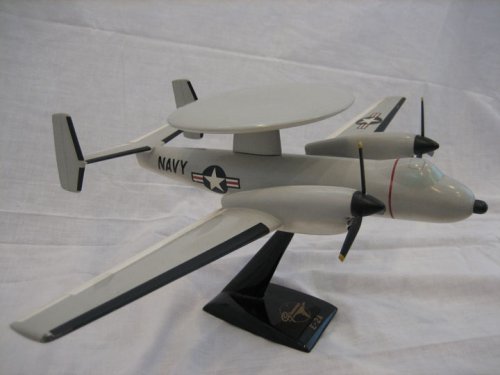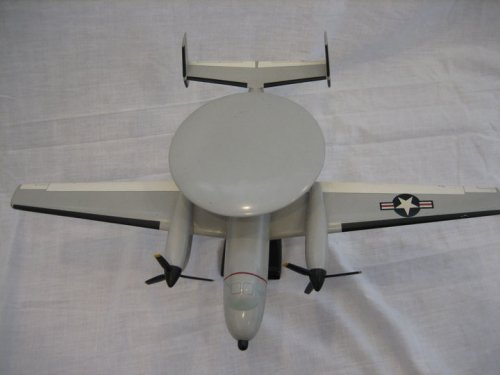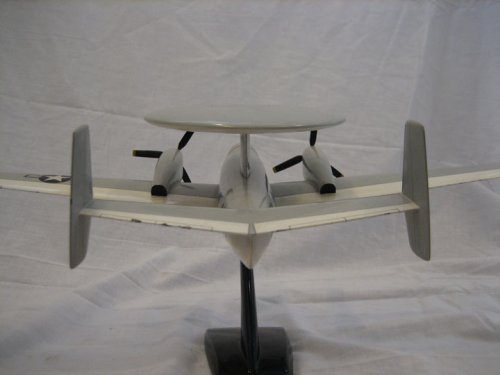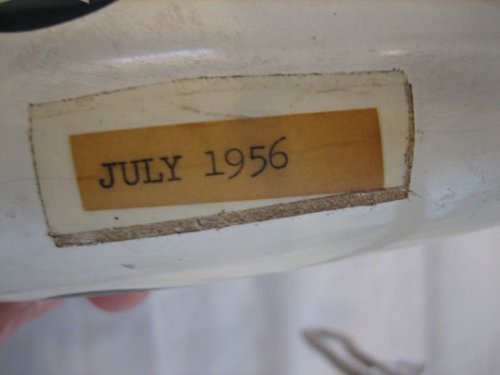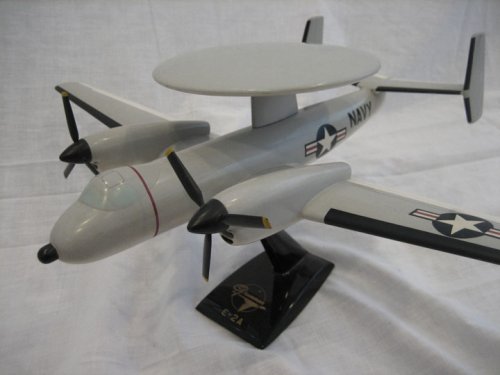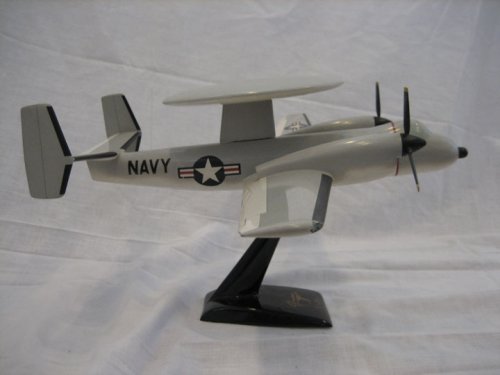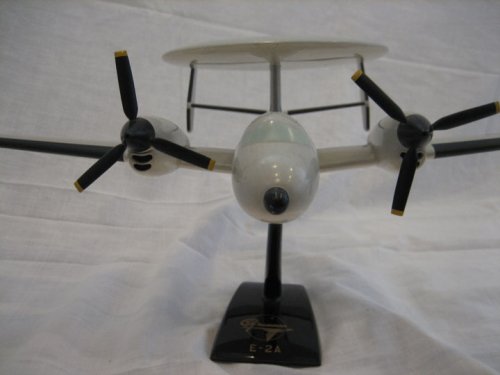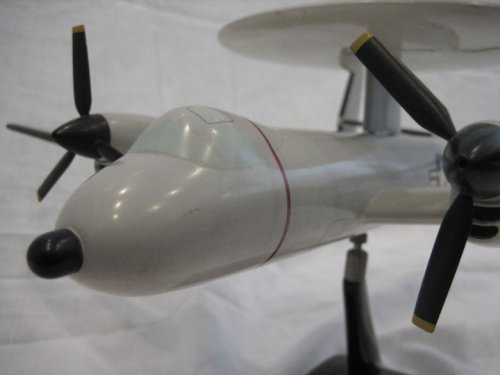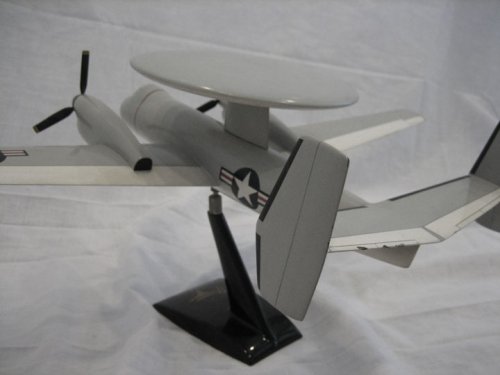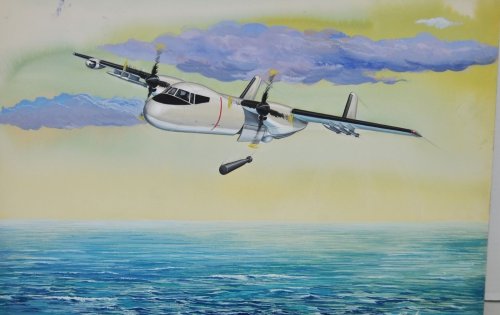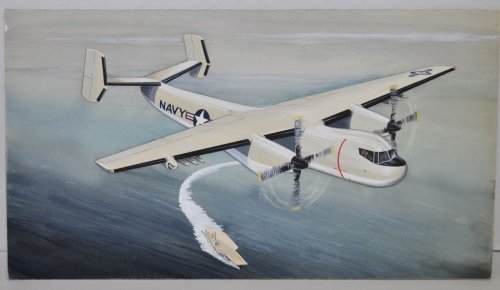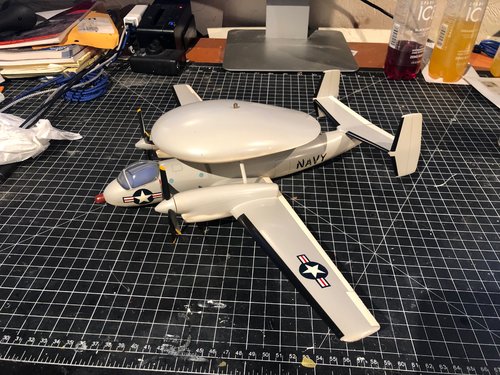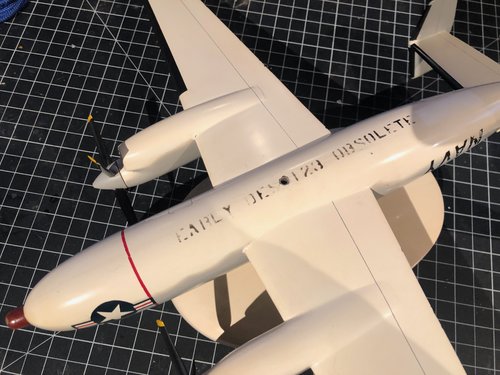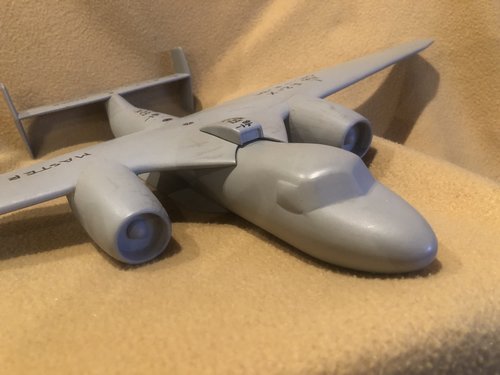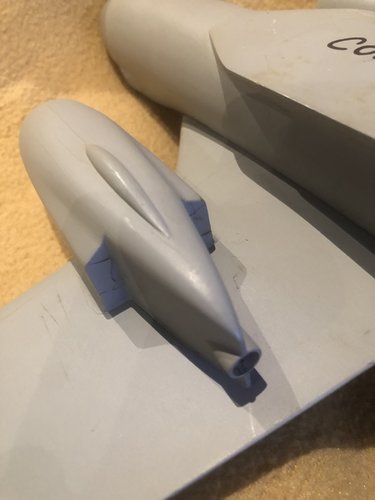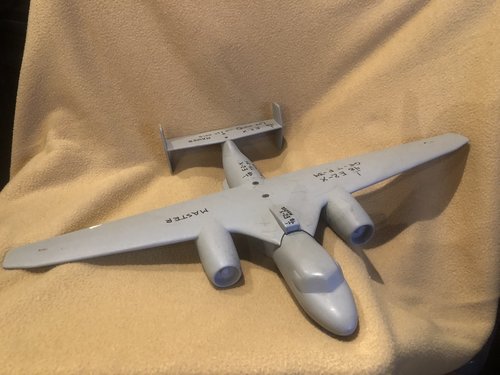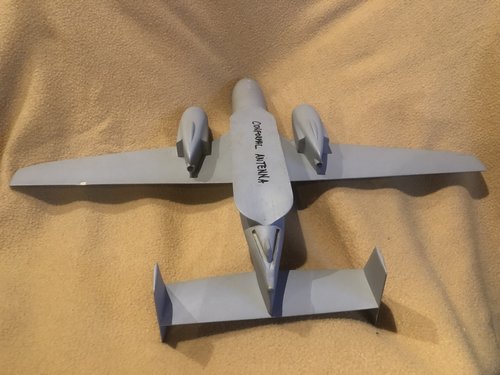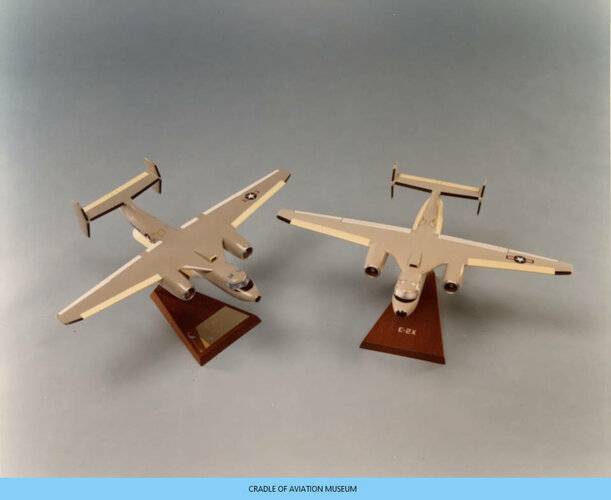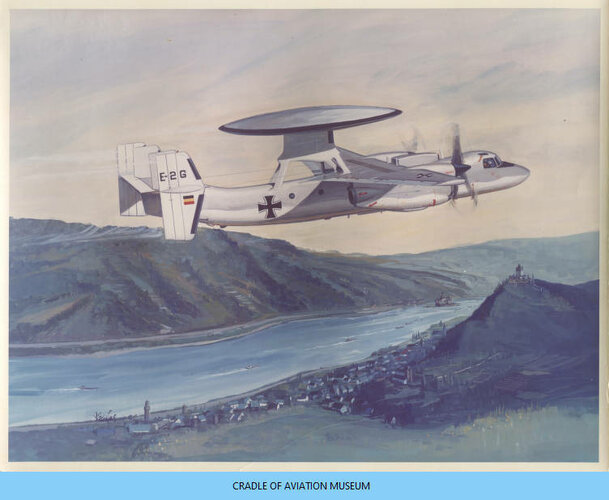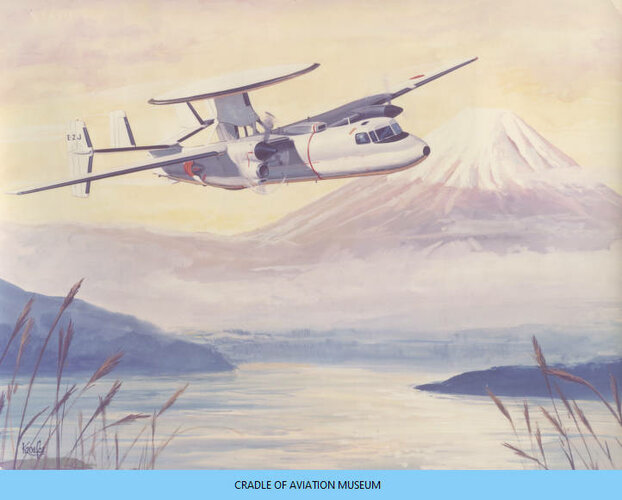The E-2X was to be powered by two GE TF-34 engines, similar to those employed on the A-10 Thunderbolt II, and the conformal radar antenna arrays would be located in the wing leading edges, fuselage sides, and horizontal tail trailing edges. Figure 7.15 shows the extensive changes made to accommodate the conformal radar. In order to house the conformal antenna arrays in a level horizontal tail, the existing E-2C horizontal stabilizer that had dihedral was removed and replaced by the tail employed on the C-2 Greyhound COD transport, which had no dihedral. Dihedral is the angle between horizontal and the upward angle of the horizontal that influences the amount of rolling moment the aircraft can achieve.
With the rotodome removed, a change occurred in longitudinal stability
(pitch axis) that necessitated a wing glove, which housed additional fuel, to
be added forward of the wing leading edge, as shown in Fig. 7.15. Ernie
Ranalli, head of the Stress department, performed the preliminary structural
analysis of the wing glove. Another big challenge of the design was to
accommodate the TF-34 engines without changing the E-2C main landing
gear. The solution was to “wrap” the TF-34 engine intake and exhaust ducts
around the landing gear utilizing a split fan exhaust system that Frank
Dellamura and Vin Crafa worked on intensely. It was rationalized that
penalties due to additional internal drag would be overcome by a more
powerful and efficient TF-34 engine variant, had the design reached a
development stage.
The conformal radar offered the potential of a lighter weight and less
“draggy” installation in a completely new airframe design compared to a
conventional rotodome design. The installation of the conformal radar in the
E-2X derivative revealed weight and volume penalties due to the distribution
of the conformal arrays and transmitters in both sides of the fuselage, wing
leading edges, and horizontal tail tailing edges. The number and weight of
transmitter units, additional wing structural weight, required power and
resultant cooling penalties, and the internal volume required to distribute
power, signal, and cooling lines throughout the aircraft were many of the
issues that had to be resolved based on available state-of-the-art technology.
Harvey Fromer and the design team presented the results to the Navy, and the
E-2X concept was also shelved. Historically, these efforts clearly
demonstrated that Grumman was constantly trying to exploit advanced
technologies by creating advanced aircraft systems concepts in the 1990 time
period.

